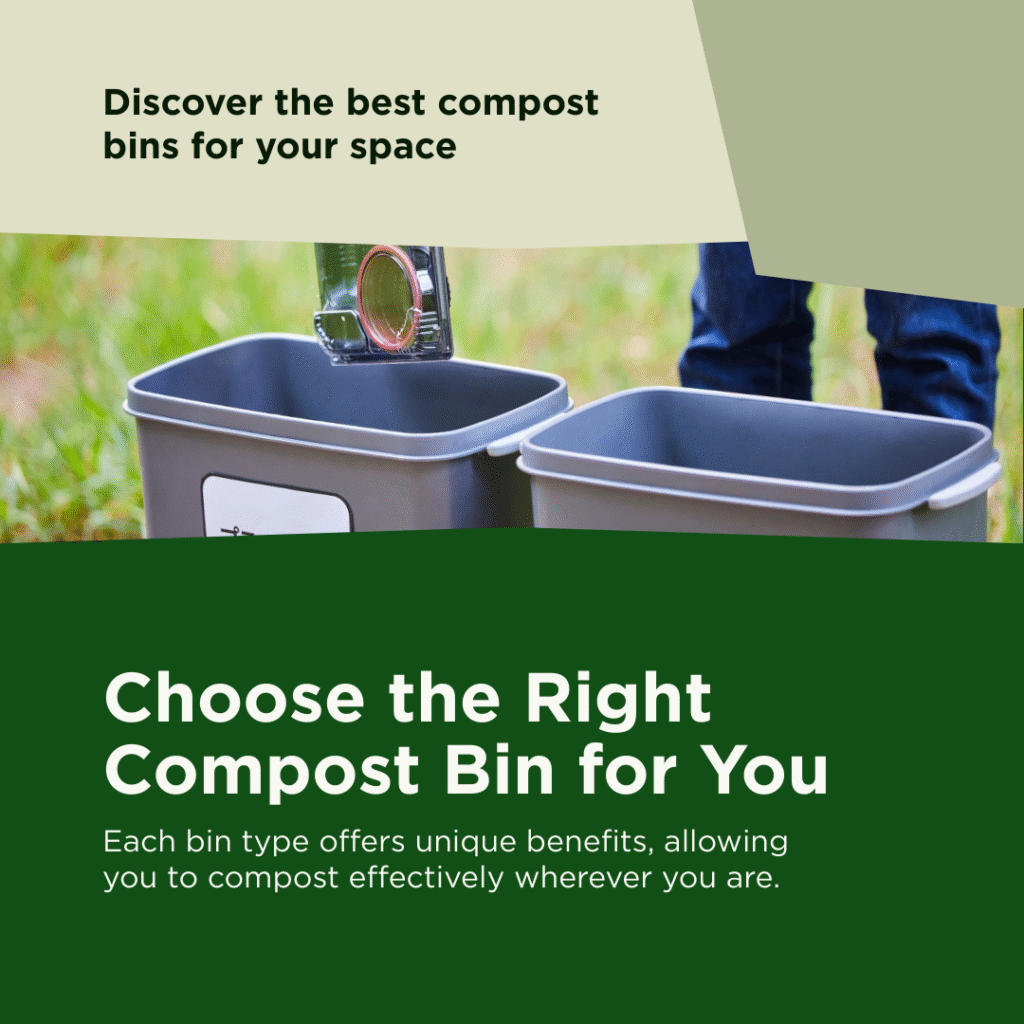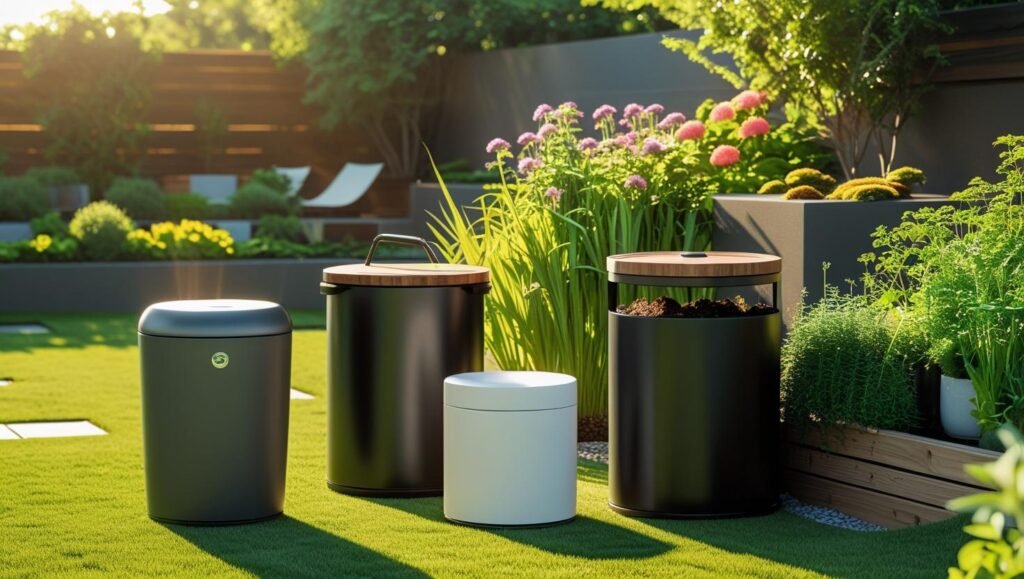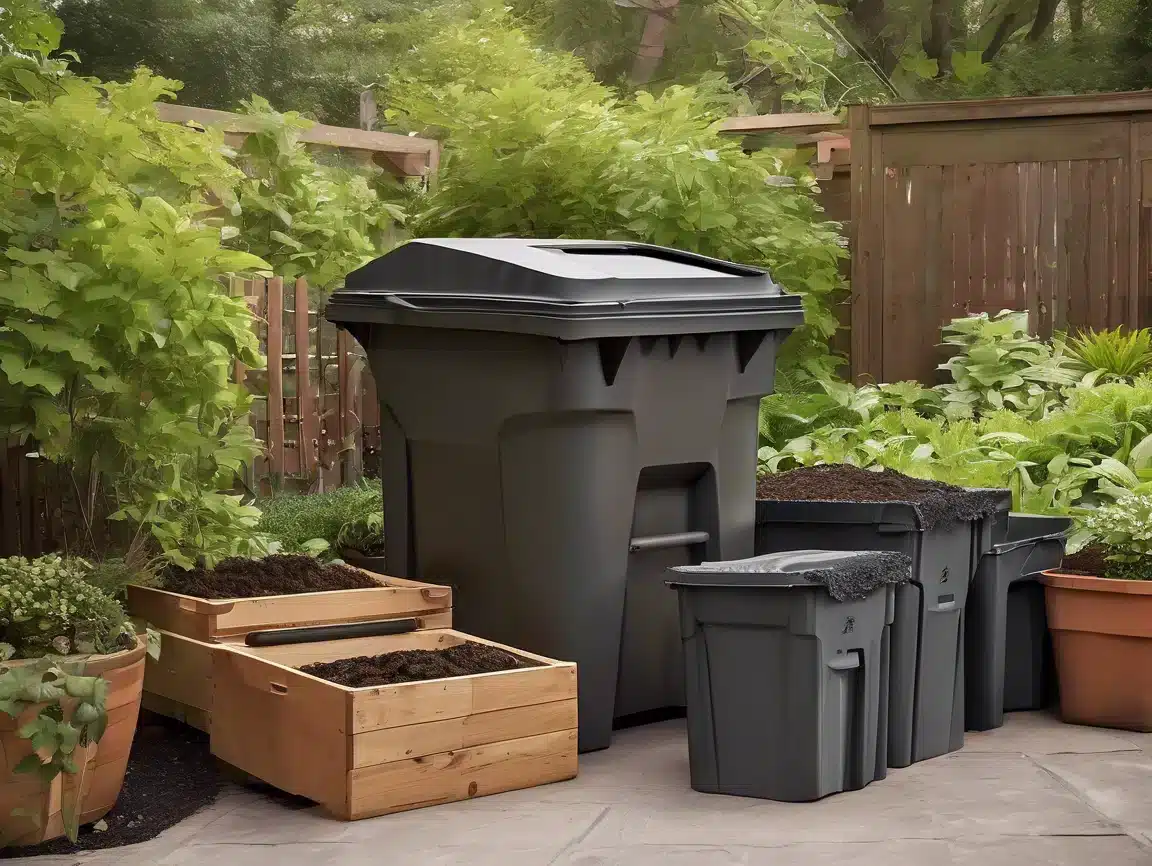Why Choosing the Right Compost Bin Matters

Choosing the appropriate compost bin is crucial for ensuring a successful composting experience. An unsuitable bin can create numerous challenges that not only hinder composting efforts but also lead to unpleasant living conditions.
A poorly designed compost bin may generate foul odors, attracting pests such as flies and rodents, creating an unsightly and unhygienic environment in your garden or yard. These issues can deter both novice and experienced composters from reaping the benefits of nutrient-rich soil amendment produced through decomposition.
When selecting a compost bin, several factors should be considered to enhance your composting journey.
Start by assessing the space available in your yard or garden.
A compost bin that is too large for the space may lead to neglect or inefficient processing of organic material.
Conversely, a bin that is too small may fill up quickly and require frequent emptying, which can be inconvenient and unexpected.
Understanding household lifestyle also plays a vital role; busy families with a high volume of kitchen scraps may require a larger, more efficient compost bin, whereas individuals who generate less waste could opt for a smaller solution.
Furthermore, the type of material used in the compost bin impacts the decomposition process significantly.
Some bins are designed for easy aeration, promoting faster breakdown of organic matter.
Insulated bins also help retain optimal temperatures, which speeds up the composting process.
Ultimately, understanding the implications of your compost bin choice can lead to a more effective and pleasant composting experience.
It is essential to take the time to select a bin that suits your needs, thus minimizing the potential for odors, pests, and other challenges associated with improper composting.
Making an informed decision will not only enhance your composting success but also positively impact your household and the environment.
Best Compost Bin For Small Spaces

Step 1 – Choose the Right Size for Your Compost Bin
When selecting a compost bin, the size is a crucial factor that significantly influences its effectiveness and practicality.
The bin size should match your household’s amount of waste generation.
For example, a small compost bin is suitable for one to two people, typically holding between one to three liters. This size is ideal for individuals or couples who generate minimal kitchen scraps and yard
waste.
As households grow in number, so too does the need for a larger composting solution. For families of three to four, a medium-sized bin with a capacity ranging from five to ten liters is often recommended.
This size can accommodate the additional organic waste generated from cooking and gardening while ensuring that the composting process remains efficient and manageable.
Moreover, for larger families or avid gardeners, a large compost bin with a capacity of fifteen liters or more is essential.
This type of compost bin allows for a substantial volume of organic material, making it possible to compost various types of waste without overwhelming the system.
With larger bins, users can process kitchen scraps, yard debris, and other compostable materials effectively.
Furthermore, the size of your compost bin directly impacts how frequently it needs to be emptied.
Smaller bins may require more regular emptying, especially if they are filled quickly, while larger bins can accommodate waste for longer periods, promoting better composting conditions.
Thus, selecting the right compost bin size is not merely about fitting it into your space; it directly relates to household size and composting efficiency.
Step 2 – Think About Odor Control
Odor control is a critical consideration when selecting a compost bin, as unpleasant smells can deter individuals from maintaining an effective composting practice.
Various factors contribute to odors during composting, most notably excessive moisture, an imbalance of materials, and inadequate ventilation.
When the compost pile becomes too wet, it creates an anaerobic environment, leading to the production of sour or rotten odors. Similarly, a surplus of nitrogen-rich greens, such as fruit scraps or grass clippings, can overwhelm the compost and contribute to foul smells if not balanced with carbon-rich materials.
To mitigate odor issues, it is essential to look for compost bins designed with features that enhance air circulation.
Adequate ventilation allows oxygen to penetrate the compost, promoting aerobic bacterial activity, which helps break down materials without producing noxious odors.
Additionally, choosing a bin with a sealed lid can further control odors and prevent pests from accessing the compost. Many modern compost bins include carbon filters that absorb and neutralize unpleasant smells, making them ideal for urban settings or confined spaces like apartments.
For those living in smaller spaces or with limited outdoor access, electric composters can be an excellent choice. These devices mechanically aerate and process compost, minimizing odors while speeding up decomposition.
Charcoal-filtered lids are another effective option for maintaining odor control, as they actively trap and eliminate smells while allowing airflow.
When selecting a compost bin, consider materials that naturally trap odors, such as certain plastics or metals, which can help maintain a fresh environment.
Investing in a well-designed compost system will not only simplify composting but also enhance your home’s overall atmosphere by reducing unwanted odors.
Step 3 – Select a Canister That Fits Your Space
When selecting a compost container, one of the foremost imperative considerations is the space available for storage.
The measure of your compost bin should adjust along with your everyday habits and the range where you proposed to keep it. For people with restricted space, such as those living in lofts or little homes, space-saving alternatives have become crucial.
Countertop canisters or little indoor composters can be perfect for these scenarios, allowing for effective composting without taking up as much room.
If you have got marginally more room, consider an under-sink compost holder. These containers can discreetly store food scraps while staying easily accessible.
For those with open-air patios or overhangs, compact and stylishly satisfying containers are accessible, frequently highlighting plans that enhance the excellence of your space, while serving a commonsense purpose.
Look for holders that coordinated well with your open-air decorations to preserve a cohesive appearance.
For homeowners with gardens, the alternatives extend essentially. Conventional compost canisters, tumblers, or canisters made from reused materials can line cultivate corners efficiently.
It is fundamental to survey how frequently you’ll include materials in your compost and select a canister size that accommodates this frequency. On the off chance that space permits, investing in a bigger composter is fitting because it can handle a greater volume of kitchen scraps and yard squander over time.
In small planting settings, stackable or thin compost plans may well be preferable.
These alternatives permit for adaptability in overseeing compost layers and can optimize accessible vertical space. Furthermore, it is crucial to reflect on the openness of your compost container; it ought to be put in a area that streamlines turning the compost and including modern materials.
For more point by point experiences with respect to indoor versus open air compost bins, various assets are accessible to direct your choice further.
Bonus Tips for Choosing the Right Bin
Portability and Storage
When selecting the perfect compost bin, it is essential to consider several additional factors that may influence both the practicality and effectiveness of your composting efforts.
One of the first questions to reflect upon is the need for portability. If you anticipate moving your compost bin regularly—perhaps to take advantage of sunny spots or to better manage the space in your garden—opt for bins with handles or those that boast a compact size.
Such features will not only enhance mobility but make the composting process more convenient.
Composting Frequency and Capacity
Another important consideration is the frequency with which you plan to add materials to your compost bin. If you are likely to produce kitchen scraps daily, you may want a bin that can accommodate a steady influx of waste.
Conversely, if your contributions will come weekly or perhaps even less often, a larger bin might suffice, allowing for more extensive decomposition at one time. Understanding your composting habits is crucial for choosing the right size and type of bin.
Fast Composting and Electric Options
If speed is of the essence in your composting endeavors, you might wish to explore electric composters or other rapid-composting systems.
These devices can significantly reduce the time it takes to break down organic materials, providing a more efficient solution for those eager to recycle waste sooner rather than later.
DIY vs Ready-Made Bins
On the other hand, DIY compost bins can serve as an economical option—allowing for customization to fit specific needs while often employing readily available materials.
However, ready-made bins offer established designs that can simplify the composting process with included features for better aeration and moisture control.
By asking yourself these critical questions and weighing the benefits of both DIY and commercial compost bins, you can ensure that your choice effectively supports your composting goals.
Top Prescribed Compost Canisters Based on Utilization Case
Choosing the perfect compost canister can make all the difference in developing a fruitful composting experience. Different components such as space availability, odor administration, and usefulness, must be considered. Here could be a curated list of compost bins custom-made to distinctive utilize cases.
Compost Containers for Apartments
For those dwelling in little flats, alternatives like the Full Circle Compost Container are extraordinary. This compact container is outlined to fit consistently into limited spaces whereas successfully preparing kitchen scraps.
It highlights a cover that minimizes odor whereas advancing air circulation for speedier deterioration. Also, Hoodwink Compost Canister requests to ecologically conscious users with its biodegradable materials. Its elegant design makes it an appealing expansion to kitchen stylistic layout, advertising an successful solution for composting indoors.
Bamboozle could be a cognizant choice â a choice to utilize renewable, plant-based materials rather than draining the planetâs assets. An effort to embrace low-carbon manufacturing and transportation methods. A choice to dodge contributing to the worldwide plastic squander emergency. Itâs a choice to walk a greener path.
Compost Containers for Overhangs and Patios
For composting on patios or balconies, tumbling canisters are the way to go. The Envirocycle Compost Canister is highly recommended for its space-saving design and user-friendly features. A tumbling includes permits clients to blend materials effortlessly, which quickens the composting process. Additionally, the double chamber plan guarantees that one side is continuously prepared for new kitchen squander, in this manner streamlining the composting workflow.
Compost Canisters for Gardens and Yards
Outdoor nursery workers will benefit from stationary compost containers such as the Soil Machine Compost Container. This demonstration holds a significant sum of squander, making it reasonable for bigger volumes regularly created from open air plant care. It is planned to hold warm and dampness, improving decay, whereas a secure lid minimizes odors and bother issues.
Each of these recommended compost canisters serves particular client needs whereas viably overseeing natural waste. With so numerous alternatives accessible, selecting the right compost canister gets to be a matter of tending to person circumstances.
Last Thoughts
Choosing the proper compost canister is a basic step towards successful squander management and economical living. As examined, three basic variables ought to direct your decision-making process: measure, scent, and storage.
Understanding the fitting measure for your compost canister is crucial because it guarantees you’ll proficiently manage your natural squander. A bin that’s as well little may gotten to be overpowered, whereas one that’s a little bit too big may well be underutilized.
Taking into consideration the amount of squander your family creates is key to selecting a reasonable estimate that adjusts along with your composting needs.
Equally vital is tending to the scent that can be related to composting. A well-managed compost container ought not to radiate repulsive odors; in this way, selecting a demonstrate that promotes air circulation and contains odors is vital.
Ensuring appropriate air circulation through customary turning and joining a adjust of green and brown materials can offer assistance keep up an odor-free environment. Surveying the plan of the compost canister can moreover offer additional benefits, counting built-in channels or ventilation frameworks that minimize odors.
The last calculation to consider is capacity. The area of your compost canister plays a critical part in its availability and functionality.
Whether it is put within the terrace or on a overhang, guaranteeing that it is effortlessly open empowers normal utilize. Moreover, selecting for a plan that fits inside your available space without compromising your open air aesthetics is fundamental. A well-thought-out area can offer assistance advance effective composting practices.
For those feeling dubious approximately the alternatives available, we encourage you to investigate a total buyerâs direct to compost containers. With this asset, you’ll be able to discover a show that best suits your way of life, guaranteeing that your move to composting is both proficient and fulfilling


